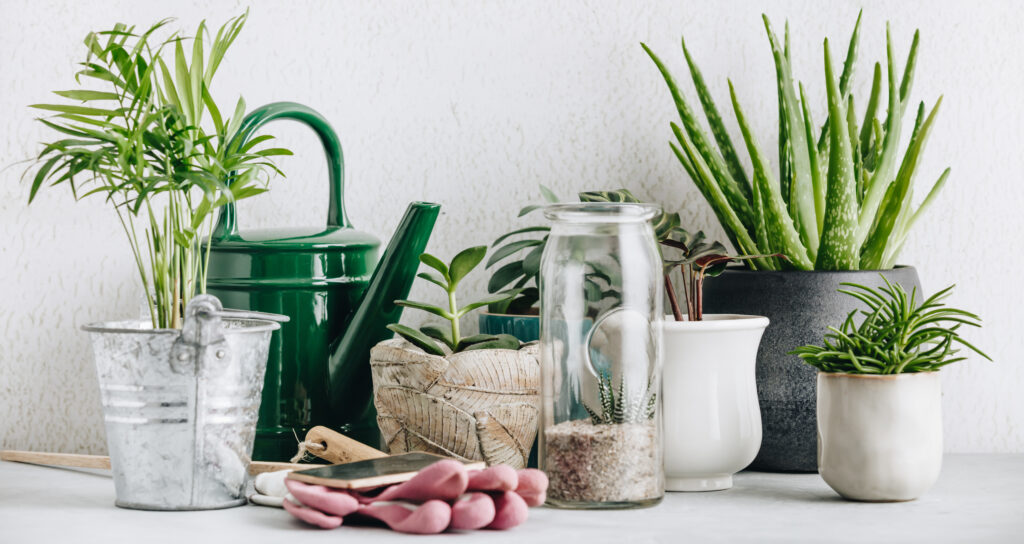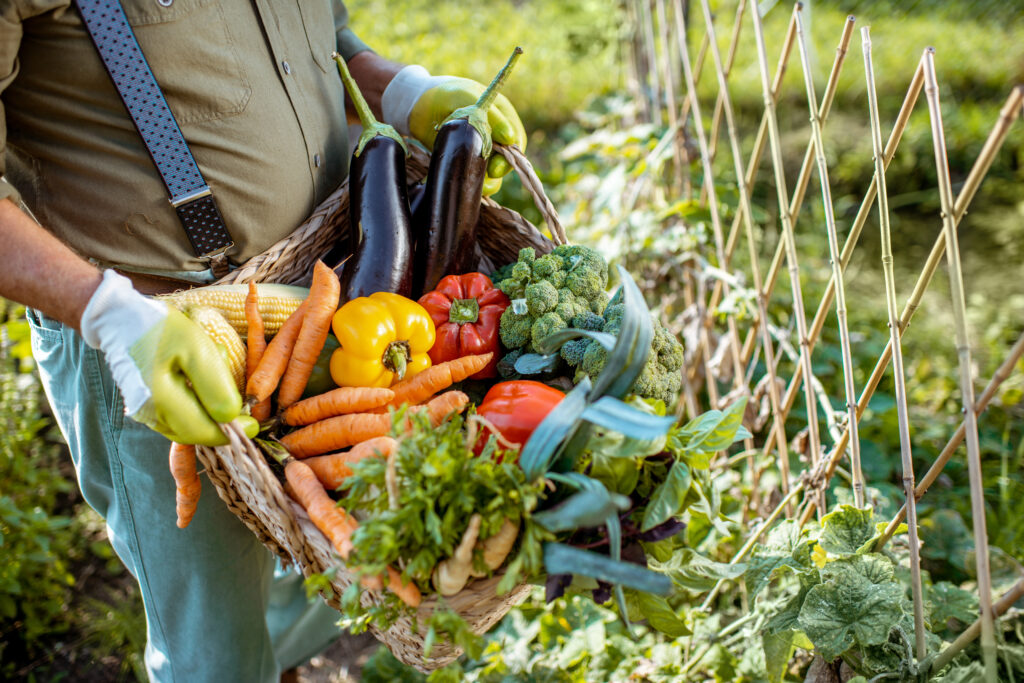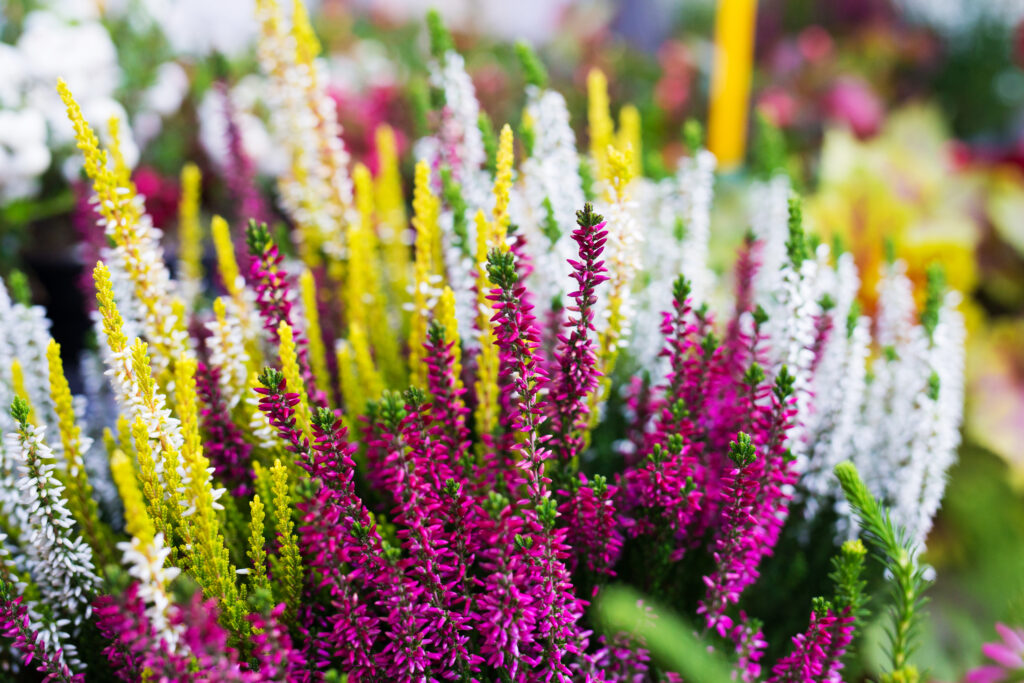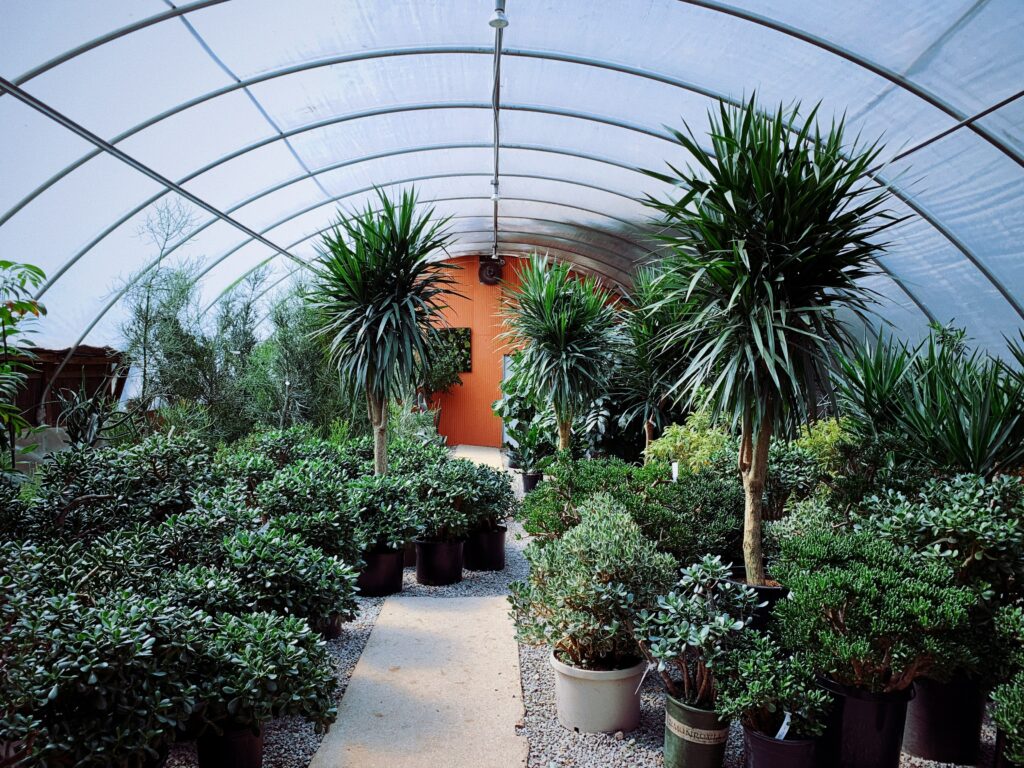If you have potted plants, you’ll want to know how often to fertilise them.
Fertilising your pot plants is essential, as it helps them to grow healthy and strong. This blog post will discuss the best times to fertilise your plants and how much to use.
We’ll also provide some tips on keeping your plants healthy. So, whether you’re a beginner gardener or an experienced green thumb, we have a little bit on everything about fertilising your pot plants!
How often to Fertilise Pot Plants?

Fertilising your pot plants is essential to ensure they remain healthy and grow. However, it’s important not to over-fertilise, as this can damage the roots and lead to problems such as a nutrient burn.
When deciding how often to fertilise your pot plants, there are a few things to consider. First, consider the type of plant you are growing. Some plants, such as cacti and succulents, don’t need to be fertilised often. Secondly, take into account the time of year.
Plants typically need more nutrients during the spring and summer when they are actively growing. In the autumn and winter, when growth slows down, you can reduce the frequency of fertilising.
Finally, consider the size of the pot. Larger pots will need to be fertilised more often than smaller pots, as the plants have a greater surface area and are growing faster. Considering these factors, you can determine how often to fertilise your pot plants without damaging them.
Fertilising Frequency for Different Types of Plants
Fertilising frequency for different types of plants can vary depending on the type of plant, the age of the plant, the time of year, and the climate.
For example, annual flowers and vegetables must be fertilised every four to six weeks during the growing season.
Perennial flowers and shrubs should be fertilised every six to eight weeks.
Trees and lawns should be fertilised every eight to twelve weeks.
In general, it is best to err on the side of too little fertiliser rather than too much. Over-fertilizing can lead to burns, discolouration, and other damage to plants. If you are unsure how often to fertilise your plants, consult a local gardening expert or extension office.
Fertilising frequency based on Type of Plants
Vegetables

The type of vegetables you are growing will affect how often you need to fertilise them.
For example, leafy greens like spinach and lettuce will benefit more frequent fertilisation than root vegetables like potatoes and carrots.
It is because greens grow more quickly and need more nutrients to support their growth.
Generally, it is best to fertilise greens once every two weeks during the growing season.
For root vegetables, however, fertilising once a month should be sufficient.
It is also essential to consider the type of fertiliser you are using. Organic products like compost or manure release nutrients slowly over time so they can be applied less frequently than chemical fertilisers.
However, chemical fertilisers can burn plants if they are not used carefully, so be sure to follow the instructions on the package.
By choosing the right fertiliser and applying it at the correct frequency, you can ensure that your vegetables get the nutrients they need to thrive.
Flowers
Flowers are a vital part of any garden, and providing them with the right amount of fertiliser is essential for keeping them healthy.

The frequency you fertilise will depend on the flower you are growing.
Annual flowers should be fertilised every two weeks, while perennials can get by with once-a-month feedings.
If you are growing blooming plants, such as roses or chrysanthemums, you should add a bloom booster fertiliser to your regular feeding schedule.
It will help to promote more abundant flowering. With proper fertilisation, your flowers will thrive and provide your garden with colour and beauty for many seasons.
Trees

There is no definitive answer regarding how often you should fertilise your trees.
It depends on various factors, including the type of tree, the age of the tree, the time of year, and the type of soil in which the tree is planted.
Generally, however, it is best to fertilise trees every two to three years. It will help to ensure that they remain healthy and continue to thrive.
If you are unsure how often to fertilise your particular type of tree, consult a professional arborist or landscaper for guidance.
Shrubs
Shrubs are a fundamental part of the landscape and provide homes for many birds and small animals.
They come in many shapes and sizes, and their flowers attract bees, butterflies, and other pollinators.
Fertilising shrubs is essential to maintain their health, vigour, and appearance. However, over-fertilisation can damage plants. It is important to know how often to fertilise shrubs based on the type of plant.
Deciduous shrubs should be fertilised in early spring before new growth begins. Evergreen shrubs should be fertilised in late spring or early summer. Base the frequency of fertilisation on the age and health of the plant.
Younger plants may need to be fertilised more often than older plants.
Healthy plants may only need to be fertilised every other year. Plants stressed by drought or pests may need to be fertilised more often.
A simple soil test can help determine the fertiliser needs of your shrubs. Apply fertiliser to dry soil and water thoroughly after application.
Avoid getting fertiliser on the leaves or stems of the plant to prevent burning. Follow the directions on the fertiliser package for the best results. With some care, your shrubs will thrive for years to come.
Fertilising Frequency Based on Pot Size
Fertilising frequency can and should be based on the pot size used for your plants.
A larger pot will have more soil for the roots to grow in. Therefore, less fertiliser is needed compared to a smaller pot.
The plant’s roots will also spread out more in a larger pot, which means they can uptake more nutrients from the soil.
Generally, it is best to fertilise your plants every two weeks if you use a small pot and every four weeks if you use a large pot.
If you are unsure of what size pot to use for your plants, it is always best to err on the side of a larger pot.
It is because a plant that is too small of a pot will become root bound and unable to uptake enough nutrients from the soil, no matter how often you fertilise it.
Fertilising Frequency Based on Time of Year
Every gardener knows that fertiliser is essential for healthy plants. But what many gardeners don’t realise is that the frequency with which you fertilise can also significantly impact plant health.
Generally, it’s best to fertilise more often during the spring and summer, when plants are actively growing. During these months, apply a balanced fertiliser every four to six weeks.
It will give plants the nutrients they need to thrive without overloading them. In the fall and winter, plants grow more slowly, so you can reduce the fertilising frequency to every six to eight weeks.
By following this simple schedule, you can ensure that your plants always have access to the nutrients they need.
Tips to Keep Your Plants Healthy
1. Inspect your plants regularly for pests or diseases and take action immediately if you see anything concerning
2. Water your plants regularly, especially during hot weather
3. Fertilise your plants regularly according to the schedule that is appropriate for the type of plant
4. Prune dead or dying branches from your plants to encourage new growth
5. Place your plants in an area where they will receive the appropriate amount of sunlight for their needs
By following these simple tips, you can ensure that your plants stay healthy and thrive for years.
Frequently Asked Questions
1. What type of fertiliser should I use?
The type of fertiliser you use will depend on the growing plants. For example, acid-loving plants such as azaleas and rhododendrons need a fertiliser specifically designed for them.
Most other plants will do well with a balanced fertiliser containing equal nitrogen, phosphorus, and potassium.
2. How can I tell if my plants are getting too much or not enough fertiliser?
If your plants are getting too much fertiliser, you will see signs of leaf burn, which is when the tips or edges of the leaves turn brown. If your plants are not getting enough fertiliser, they will be pale in colour and will not grow as quickly as they should.
3. What is the best way to apply fertiliser?
The best way to apply fertiliser depends on the plant you are growing. For example, garden vegetables should be fertilised with a side-dressing of compost or manure. Shrubs and trees can be fertilised with a slow-release fertiliser applied around the base of the plant.
However, an hassle-free way to apply your fertiliser would be our injection system that lets you fertilise your plants with any garden hose or sprinkler.
The Bottom Line:
The verdict is in; fertilising pot plants every week is the best way to ensure they stay healthy and look their best.
By following this simple routine, you can avoid replacing your plants prematurely or dealing with wilted and undernourished foliage. So get out that fertiliser and put it to good use!
